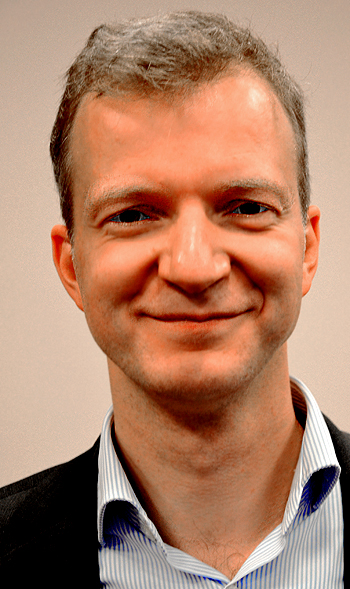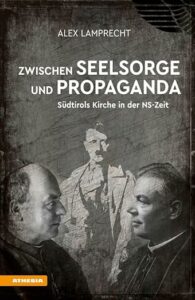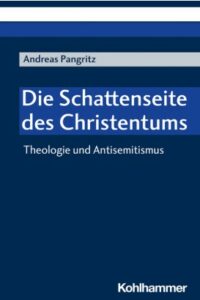Contemporary Church History Quarterly
Volume 31, Number 1 (Spring 2025)
“The New Testament is the most anti-Jewish book in the whole world.” Christian Antisemitism in the 20th Century
By Manfred Gailus, Technischen Universität Berlin; Translated by Lauren Faulkner Rossi, with the assistance of DEEPL
This text originally appeared in German in Der Tagesspiegel, 7 February 2025, pg. 12-13.
There is a portrait of the former court and cathedral preacher Adolf Stoecker in the reserve room of Berlin Cathedral. For a long time, the huge painting hung in the sacristy of the church, where the clergy prepare for their sermons. Together with other portraits of cathedral preachers, the painting was taken down years ago, wrapped in packing paper and tied up tightly. This has symbolic power: Stoecker, the Christian-social co-founder of modern German antisemitism, has been made to disappear for the time being.
Stoecker died in 1909 and was buried with great expressions of condolence by the Protestant congregation. The renowned theologian Reinhold Seeberg from Friedrich Wilhelm University in Berlin gave a memorial speech for the deceased and paid tribute to him as a powerful, strong man of great gifts: a “pious child of God” and “gentlemanly man” at the same time. The cathedral preacher and the professor of theology were kindred spirits. With justification, Seeberg can be counted among the main guardians of Stoecker’s spirit. In 1922, he gave a lecture on Judaism and the church to the Central Committee for Inner Mission: the fight against the “Jewish spirit” is to be waged as a struggle against an orientation hostile to Christianity and Germanness. Seeberg saw Judaism as a foreign body that promoted the “dissolution of the historical and national life of the peoples”. The poison that “the Jew” served to others – so the theologian believed – was not injurious to himself. However, Seeberg rejected the unleashing of a “racial struggle” against Jewry with the aim of expulsion. One could not resort to the methods of Bolshevism. Anti-Jewish measures of violence, such as those recommended by Luther in his writings on the Jews, no longer made sense for that time.
Court and cathedral preacher Bruno Doehring spread similar resentment. Previously he had mixed his aggressive war sermons with racial antisemitic vocabulary. In his cathedral sermon on April 25, 1924, he declared that the “national question” now so burning in Germany had been awakened by the “shameless behavior of Judaism, which is hostile to Christ”. Ancient Jews could have become “the people of the earth”, but they had stoned their prophets and nailed Christ to the cross. As a people, they had thus condemned themselves to die. The clergyman proclaimed to his ever-growing audience in the cathedral that the Jews had become the “typical negative” of the world. With such convictions, the political preacher agitated in organizations such as the Evangelical League, in other associations, through a flood of newspaper articles, and as a member of the DNVP in the Reichstag.
A third important Protestant representative was also inspired by Stoecker. As a theology student, Otto Dibelius had attended a celebration of the Association of German Students in 1900, heard Stoecker’s speech, and spontaneously joined the antisemitic association. This marked the beginning of his career as an antisemitic publicist. In 1922, he complained of an “undesirable mixture of blood” due to the excessive immigration of “Eastern Jews.” In June 1927, now as general superintendent of the Kurmark in the rank of bishop, he wrote in the Berlin Evangelisches Sonntagsblatt: “The Jewish question is not primarily a religious but a racial question. The proportion of Jewish blood running through our national body is much higher than the religious statistics show.” Dibelius associated the political rise of the NSDAP after 1930 with expectations of a re-Christianization following the end of the “godless Republic” of Weimar. Accordingly, he welcomed the rise of Hitler’s party to power in alliance with the German Nationals. In the aftermath of the Nazi boycott of Jews, on April 1, 1933, which he justified, he made a more fundamental statement on the “Jewish question”: the “Jewish element” had played a leading role in all the dark events of the last fifteen years. The strong influx of Jews from the East had endangered “German national life.” No one could seriously object to the current suppression of Jewish influence. In order to solve the “Jewish question”, Germany’s eastern border had to be strictly sealed off.
Professor Seeberg, Cathedral Preacher Doehring, General Superintendent Dibelius – these voices are not outsiders, but represent the center of national Protestantism in the Weimar era. Their hybrid antisemitism combined theological anti-Judaism with set pieces of political and cultural antisemitism, while at the same time their speech about “the Jews” was mixed with völkisch ideology. With Hitler’s rise to power and the advance of the German Christian (Deutsche Christen – DC) movement, Protestant antisemitism became seriously radicalized. The publication Die Judenfrage (1933) by the renowned Tübingen New Testament scholar Gerhard Kittel should be singled out from the wealth of corresponding creeds. With his writing, he wanted to give the fight against Judaism a Christian meaning: the “meaning of our antisemitic struggle” must be to place Jews under strict immigration law again. The Christian also had his place in this battle. Jews were once the people of God, but they were no longer. Because they crucified Jesus, they had become homeless. In the New Testament, Kittel recognized the “most anti-Jewish book in the whole world.” The “calamitous mixing of blood and race” since the Enlightenment had caused a “putrefaction” of the German people and had to be corrected through strictly nationalist policies.
Where the German Christians predominated as they did in Berlin, they erased traces of Jewishness in theology, liturgy and songs. “Non-Aryan” pastors were ousted. Church hymns had to be rewritten; for the future, no “Zion” and no “Hosanna” were to be heard in the German church. Lectures on “Luther and the Jews” or Adolf Stoecker were the order of the day. In March 1937, the Berlin superintendent Schleuning* was thankful for the special edition on the “Jewish question” issued by the inflammatory newspaper Der Stürmer. He proudly emphasized that the Nuremberg Laws that Hitler gave to the Germans had their precursors in the church’s own Jewish legislation.
Now, the German Christians were not the only ones who represented the Protestants during the Nazi era. There were other, more moderate groups – or, like the Confessing Church (BK), there was church opposition. But even there, opposition to Nazi Jewish policy remained an exception – such as the high school teacher Elisabeth Schmitz‘s memorandum, “On the situation of German non-Aryans” (1935), or the theologian Dietrich Bonhoeffer. On the contrary, ambivalence predominated in the church opposition camp: alongside sympathy and support for the persecuted, there were also explicitly antisemitic voices.
The churches were generally silent about the November 1938 pogroms, with some DC regional bishops even explicitly welcoming the outbreaks of violence. Critical voices were few and far between. Open protest against the state’s Jewish policy was dangerous. The reformed theologian Helmut Hesse preached in Wuppertal in June 1943: the church had to resist all antisemitism, testify to the salvation-historical [heilsgeschichtliche] importance of Israel in the face of the state, and resist any attempt to destroy Judaism. He was imprisoned and later sent to Dachau concentration camp, where he died at the end of 1943 at the age of 27.
After Hitler and the Holocaust, hybrid Christian antisemitism was not immediately overcome. The racist antisemitism of the German Christians was no longer present in the church public. But where had the many Nazi pastors gone? What about traditional religious anti-Judaism? The Stuttgart Declaration of Guilt of October 1945 made no mention of the persecution of Jews, in which the church itself was partly involved. The Württemberg Bishop Theophil Wurm, who was the first Chairman of the Council of the Evangelical Church in Germany (EKD), defended the severely incriminated Tübingen “Jewish researcher” Gerhard Kittel in an expert opinion (April 1947): it had been part of Kittel’s ecclesiastical teaching assignment to point out the “divine causes of the rejection of the people of Israel.” Kittel’s theologian friends in Tübingen even said that, with his writings, Kittel had “resisted in the most pronounced sense” in the area of the “Jewish question.”
The “Hoff case” was shameful: in 1943, the Berlin provost Walter Hoff* had boasted in writing that he had participated in the liquidation of Jews during the war in the East. After he had initially been stripped of his clerical rights, growing calls within the church leadership to rehabilitate the alleged Holocaust pastor reached Otto Dibelius, who had risen to become bishop of Berlin. The consistory’s decision in February 1957 restored the former provost’s full pastoral rights.
Only a few voices spoke plainly. Theological revisions of the Christian-Jewish relationship took a long time. As a religious mentality, the anti-Jewish spirit of Stoecker was deeply ingrained and outlasted the caesura of 1945. Leading churchmen such as Theophil Wurm, Bishop Hans Meiser in Bavaria and Otto Dibelius remained influenced by it throughout their lives. Ultimately, breaking away from this unfortunate tradition was a generational issue. The critical zeitgeist of the 68ers brought a breath of fresh air, in theology as well as in the churches. In January 1980, the Rhineland Regional Church adopted a groundbreaking declaration on the renewal of Christian-Jewish relations. It acknowledged its shared responsibility for the Holocaust, condemned all anti-semitism and renounced the mission to the Jews. A significant step was the Day of Repentance sermon by Wolfgang Huber, then bishop of Berlin, in 2002, which was dedicated to remembering the fate of Christians of Jewish origin. According to Huber, the Confessing Church as an institution had also failed at the time.
Through synod resolutions, the appointment of commissioners on antisemitism, and various other activities, the member churches of the EKD have distanced themselves from antisemitic traditions and are engaged in interfaith dialogue with Jewish communities. The painful issue is not closed. Uncompromising church self-education about its own antisemitic past in the twentieth century remains an important prerequisite to convincingly oppose any spread of völkisch ideas in the church and in politics and society today. Adolf Stoecker has now been taken down in Berlin Cathedral, firmly packed away in the storeroom. Thank God, one might say. May he remain there forever.
Notes:
* Translator’s note: Johannes Schleuning, superintendent of Berlin-Lichtenberg, was a Russian-German chaplain and journalist.
* Translator’s note: well-known for his antisemitism, Walter Hoff was provost of St. Peter’s Church in Berlin beginning in the mid-1930s. During the Third Reich, he was a member of the German Christians (DC) and the Nazi Party. He served in the Wehrmacht during the war.



 Under the terms of the Hitler-Mussolini Agreement, all those South Tyroleans who retained Austrian citizenship after 1919 were now considered citizens of the Reich. They had no choice but to resettle in post-Anschluss Germany. South Tyroleans who had become Italians in 1919 were given a choice. They could opt for Germany and be resettled as German citizens in Germany, or remain and be confirmed in their Italian citizenship. Lamprecht successfully illustrates the painful decisions that South Tyroleans, lay and clergy, had to make. As a result of effective German propaganda and Italian fascist repression, more than eighty percent of South Tyroleans opted for Germany. South Tyrolean laypeople opted for Germany primarily out of resentment of Italian fascism and Italianization policies. The clergy in the parishes, however, found the decision much more difficult. Most sought to remain in their homeland.
Under the terms of the Hitler-Mussolini Agreement, all those South Tyroleans who retained Austrian citizenship after 1919 were now considered citizens of the Reich. They had no choice but to resettle in post-Anschluss Germany. South Tyroleans who had become Italians in 1919 were given a choice. They could opt for Germany and be resettled as German citizens in Germany, or remain and be confirmed in their Italian citizenship. Lamprecht successfully illustrates the painful decisions that South Tyroleans, lay and clergy, had to make. As a result of effective German propaganda and Italian fascist repression, more than eighty percent of South Tyroleans opted for Germany. South Tyrolean laypeople opted for Germany primarily out of resentment of Italian fascism and Italianization policies. The clergy in the parishes, however, found the decision much more difficult. Most sought to remain in their homeland.
 Another aunt, on the other hand, talks incessantly about the damnation that awaits Hirneise because of her turning away from God. For this aunt, there is no reality outside of faith, which is why she constantly asks God for forgiveness for Hirneise and her mother. This aunt’s husband is also strictly religious, but unlike his wife, he accepts scientific views to explain the world. For example, he sees the creation of the universe through the Big Bang as entirely possible. And he also accepts that people turn away from God, a stance that his own wife acknowledges with incomprehension. Hirneise’s mother, for her part, reports how her own mother (Hirneise’s grandmother with dementia) had demanded that her daughter remain completely abstinent until her husband—who, it should be noted, had left her—came back to her. The subject of the divorce is not discussed further, so it remains unclear why Hirneise’s father left the family. And of course, he never came back.
Another aunt, on the other hand, talks incessantly about the damnation that awaits Hirneise because of her turning away from God. For this aunt, there is no reality outside of faith, which is why she constantly asks God for forgiveness for Hirneise and her mother. This aunt’s husband is also strictly religious, but unlike his wife, he accepts scientific views to explain the world. For example, he sees the creation of the universe through the Big Bang as entirely possible. And he also accepts that people turn away from God, a stance that his own wife acknowledges with incomprehension. Hirneise’s mother, for her part, reports how her own mother (Hirneise’s grandmother with dementia) had demanded that her daughter remain completely abstinent until her husband—who, it should be noted, had left her—came back to her. The subject of the divorce is not discussed further, so it remains unclear why Hirneise’s father left the family. And of course, he never came back. In the second chapter, Pangritz addresses the problematic distinction between the terms anti-Judaism and antisemitism. He shows that the distinction between a theologically-argued hostility towards Jews and a racially argued antisemitism, which has been repeatedly postulated since the end of the Second World War, has not stood the test of time. On the contrary, such a distinction harbors the danger that (Christian) hatred of Jews is trivialized by juxtaposing it with antisemitism. Pangritz proposes “not to speak of a break, but rather of a transformation of the traditional Christian ‘doctrine of contempt’ (Lehre der Verachtung) into the modern forms of antisemitism” (35). It remains unclear, however, why Pangritz returns to the concept of anti-Judaism later in the book (e.g. 119). The term has been overused by Christian apologetics, and Pangritz himself has pointed out that the academic distinction between anti-Judaism and antisemitism has not produced any new insights or meaningful differentiations. (30). Conceptual clarity would have been helpful here, especially since Pangritz argues well with Léon Poliakov, Peter Schäfer and even Reinhard Rürup that “antisemitism” should be used in its most general sense: “The word ‘antisemitism’ denotes hostility, hatred and contempt of all kinds against Jews and Judaism; this does not exclude differences in motivation, but includes them” (33). However, this small point is the only criticism I can make in the entire book.
In the second chapter, Pangritz addresses the problematic distinction between the terms anti-Judaism and antisemitism. He shows that the distinction between a theologically-argued hostility towards Jews and a racially argued antisemitism, which has been repeatedly postulated since the end of the Second World War, has not stood the test of time. On the contrary, such a distinction harbors the danger that (Christian) hatred of Jews is trivialized by juxtaposing it with antisemitism. Pangritz proposes “not to speak of a break, but rather of a transformation of the traditional Christian ‘doctrine of contempt’ (Lehre der Verachtung) into the modern forms of antisemitism” (35). It remains unclear, however, why Pangritz returns to the concept of anti-Judaism later in the book (e.g. 119). The term has been overused by Christian apologetics, and Pangritz himself has pointed out that the academic distinction between anti-Judaism and antisemitism has not produced any new insights or meaningful differentiations. (30). Conceptual clarity would have been helpful here, especially since Pangritz argues well with Léon Poliakov, Peter Schäfer and even Reinhard Rürup that “antisemitism” should be used in its most general sense: “The word ‘antisemitism’ denotes hostility, hatred and contempt of all kinds against Jews and Judaism; this does not exclude differences in motivation, but includes them” (33). However, this small point is the only criticism I can make in the entire book.